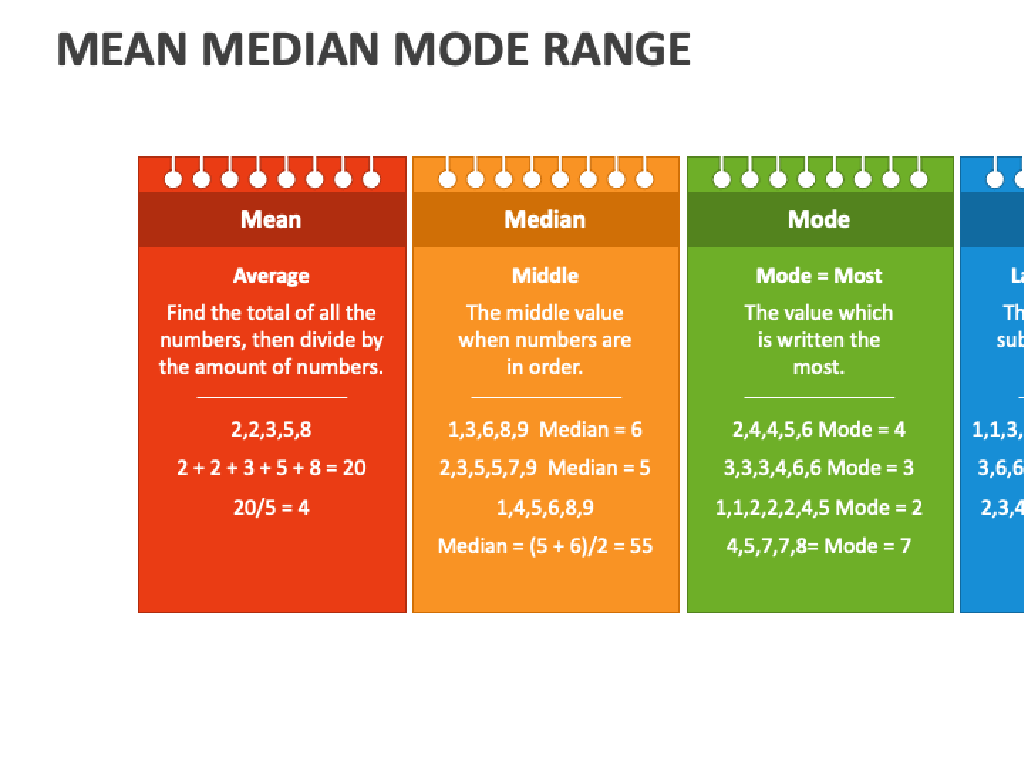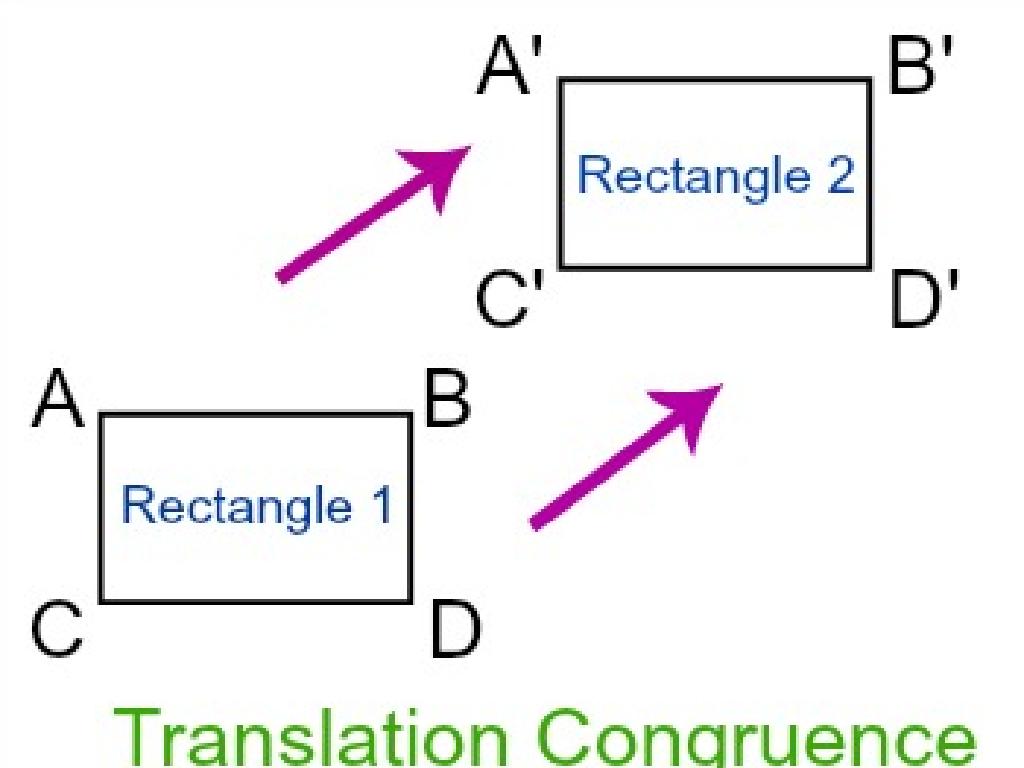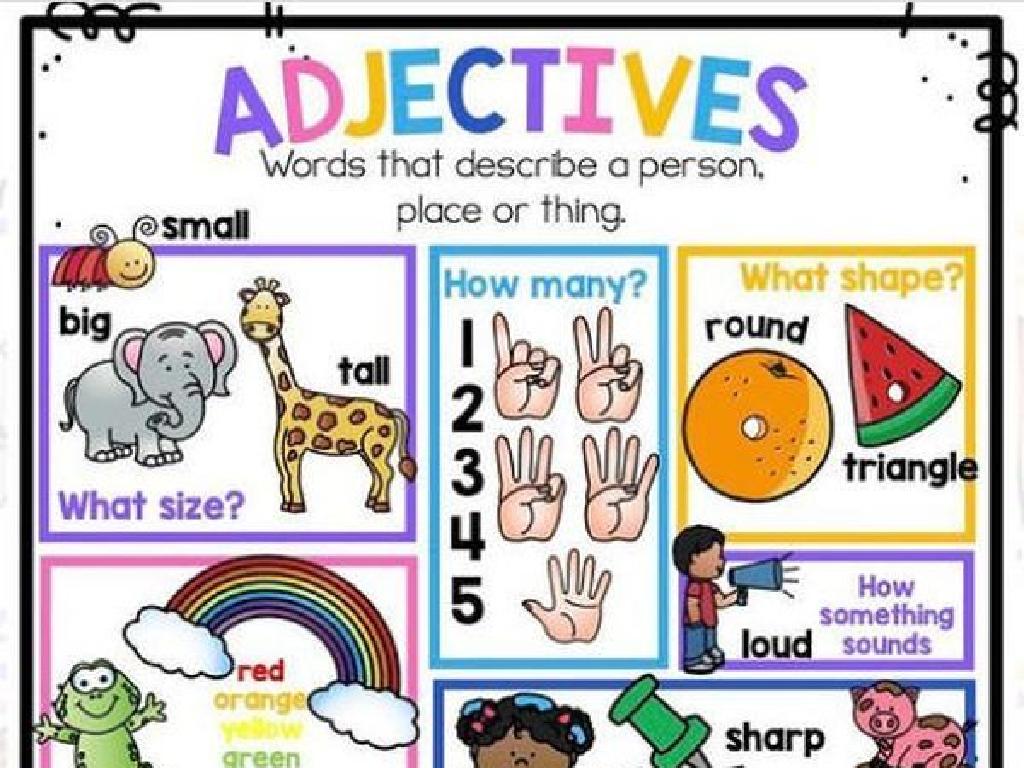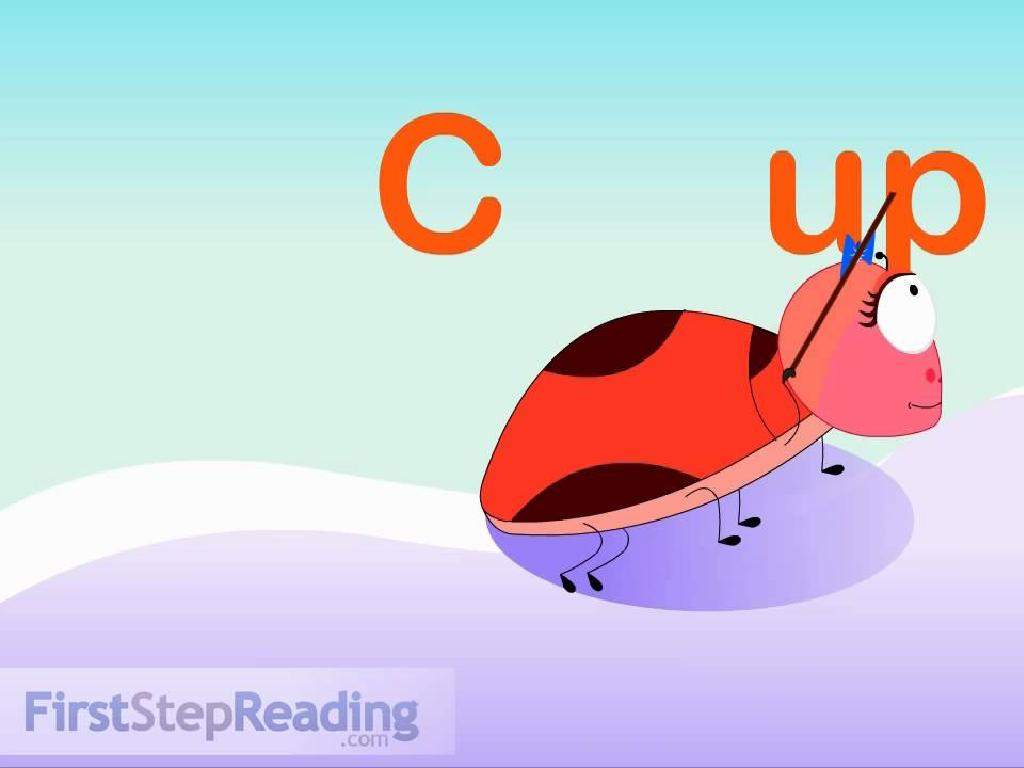Addition And Subtraction - Ways To Make A Number
Subject: Math
Grade: First grade
Topic: Addition And Subtraction Up To 20
Please LOG IN to download the presentation. Access is available to registered users only.
View More Content
Making Numbers with Addition and Subtraction
– Learn to combine numbers
– Adding numbers is like putting together puzzle pieces.
– Explore taking numbers apart
– Subtracting is like sharing cookies with a friend.
– Practice with numbers up to 20
– Fun ways to make a number
– Use toys or fingers to add and subtract.
|
This slide introduces the concept of addition and subtraction as methods of making numbers for first graders. Emphasize that addition is the process of bringing numbers together to make a new number, similar to combining puzzle pieces to see a full picture. Subtraction is the process of taking one number away from another, like when you share cookies and have fewer left. Use hands-on activities with objects like toys or fingers to demonstrate these concepts, making it interactive and relatable. Encourage the students to think of addition as ‘joining’ and subtraction as ‘separating’ to help them understand the concepts. Prepare to guide them through examples and provide plenty of practice with numbers up to 20.
Exploring Addition: Ways to Make a Number
– What is addition?
– Addition means combining numbers to see how many in all.
– Adding numbers together
– Finding the total amount
– Example with apples
– If you have 2 apples and get 3 more, how many do you have now?
|
This slide introduces the concept of addition to first-grade students. Start by explaining that addition is a way of finding out the total number when we put groups of things together. Use simple, relatable examples like combining apples to illustrate this point. Show them visually, if possible, how 2 apples added to 3 apples give us 5 apples in total. Encourage the students to use their fingers or objects to practice adding numbers up to 20. The goal is to make them comfortable with the idea of combining quantities to find a new total.
Understanding Subtraction
– Subtraction means taking away
– Like 5 – 2 means taking 2 away from 5
– It shows how many are left
– If you have 5 toys and give away 2, how many do you have?
– Example with apples
– 5 apples – 2 apples leaves us with 3 apples
|
This slide introduces the concept of subtraction to first graders. Subtraction is explained as the process of taking numbers away to find out what remains. Use tangible examples like apples or toys, as these are items children can easily visualize and relate to. The example provided uses apples to show a simple subtraction problem. Encourage students to use their fingers or objects to practice subtracting. Ask them to think of other examples of subtraction they may encounter in everyday life, like sharing snacks or counting down days to a special event.
Fun with Numbers: Making the Same Number
– Many ways to create a number
– Example: Making 4 in different ways
– Like 2+2, 1+3, or 4+0 for the number 4
– Explore ways to make numbers up to 10
– Use addition to combine smaller numbers
– Practice with your favorite numbers
– Choose a number and find all combinations
|
This slide introduces the concept that a single number can be made using different combinations of addition. Start by showing the example with the number 4 and explain that there are no wrong answers as long as the sums are correct. Encourage the children to think of as many combinations as they can for numbers up to 10. This activity helps to solidify their understanding of addition within 20 and also introduces the idea of number flexibility. For the activity, have students pick their favorite number and find all the different ways to make that number using addition. This can be done with physical objects like blocks or drawn out on paper.
Fun with Numbers: Making 5
– Exploring ways to make 5
– Examples: 2+3, 4+1, 5+0
– Simple addition pairs that equal 5
– Can we find more combinations?
– Activity: Create your own 5!
– Use objects like blocks or fingers to count
|
This slide is designed to help first graders understand that there are multiple ways to make the number 5 using addition. Start by showing them the given examples, then encourage them to use their fingers, blocks, or other manipulatives to find new combinations that add up to 5. This activity will help them grasp the concept of addition as putting together and the idea that numbers can be composed in different ways. For the activity, allow the students to work in pairs or groups to come up with their own ways to make 5 and share with the class. This interactive approach will make the learning process engaging and memorable.
Making 10 with Addition
– Learning to make 10
– Using a ten-frame
– A grid for understanding addition
– Examples: 6+4, 7+3, 5+5
– These pairs all add up to 10
– Find more combinations
– Can you think of other pairs?
|
This slide is aimed at helping first graders understand the concept of making 10 using addition. Introduce the ten-frame as a visual tool to help them see different combinations that add up to 10. Show them the provided examples and work through each one, demonstrating how to use the ten-frame. Encourage the students to find other number pairs that make 10 and share them with the class. This activity will solidify their understanding of addition within 20 and help them recognize patterns in numbers. For the activity, you can have students use physical ten-frames and counters, draw their own, or even use their fingers to find combinations that add up to 10.
Class Activity: Making Numbers Together!
– Let’s make numbers using objects
– Find different ways to create the same number
– Can you make 10 using 5+5 or 6+4?
– Work with a buddy to explore
– Share your number creations with the class
– Tell us how you made your number
|
This activity is designed to help students understand that there are multiple ways to make the same number, reinforcing the concept of addition and subtraction. Provide students with blocks, counters, or paper for drawing. Encourage them to experiment with different combinations to make numbers up to 20. Working with a partner will allow them to discuss their findings and learn from each other. After the activity, facilitate a sharing session where each pair can present their methods for making numbers. This will help students see the variety of ways numbers can be combined and separated, which is a fundamental skill in understanding arithmetic operations.
Review and Share: Making Numbers
– Review making numbers with addition
– Share your methods for number making
– Did you add smaller numbers to make a bigger one?
– Understand multiple solutions exist
– There’s no single way; all correct answers are good!
– Celebrate our number discoveries
– Let’s hear everyone’s unique ways of adding and subtracting!
|
This slide is meant to recap the lesson on making numbers through addition and subtraction. Encourage students to think about the different combinations they used to create a specific number. Remind them that there are numerous correct ways to reach the same sum or difference, reinforcing the concept that math can be flexible and creative. During the sharing portion of the lesson, allow each student to explain their approach, fostering a supportive environment where all contributions are valued. This activity not only reinforces their understanding but also builds their confidence in problem-solving and expressing their mathematical thoughts.
Congratulations on Learning Addition and Subtraction!
– Celebrate your new math skills
– Understand multiple ways to make numbers
– Like 5 is 2+3 or 6-1
– Keep practicing your addition and subtraction
– Try different combinations with numbers up to 20
– Aim to become a math star!
|
This slide is meant to congratulate the students on their hard work and progress in understanding addition and subtraction. Emphasize that there are various combinations to reach the same number, which shows the flexibility of math. Encourage them to continue practicing with different numbers up to 20 to solidify their skills. Remind them that practice is key to becoming proficient in math, and that they are on their way to becoming ‘math stars’ with every practice session they complete.






